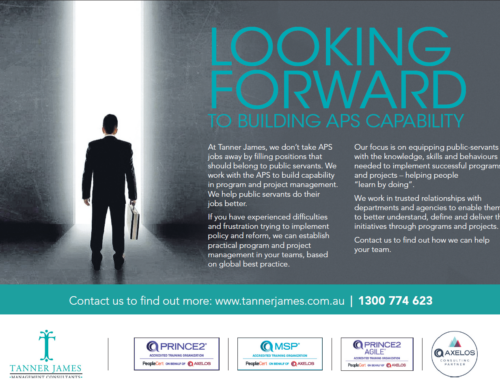A project is defined as a temporary activity where a team is assembled to create a unique product or service that is so complex that it can’t be handled through the normal day-to-day operations of a business.
The manner in which the project team work together and the management style that they work under will be a critical factor in their success. The wrong management style will inevitably reduce morale and de-motivate the team, drastically lowering their productivity and quality. This encourages people to disengage leading to increased absences and resignations (often starting with those who are the most capable) and ultimately will put your project at risk of failure.
So how can this be avoided?
The term ‘self-organising’ is synonymous with workplace initiatives like:
- Atalassian’s FedEx Days
- Results Only Work Environments (ROWE)
- Google’s 20% Time
- Crowd sourcing platforms such as Wikipedia and Uber.
While these have been phenomenally successful, that’s not what this post is about.
What’s relevant about these initiatives is that they’re based on a common foundation of intrinsic workplace motivators – people who perform complex tasks are more engaged and productive when given the flexibility to self-direct their efforts. This is also underpinned by the concept that the people closest to the work, are best placed to decide how to achieve the desired goal.
When the term self-organising is used in the context of a project team it’s more typically referring to an agile delivery approach. In this context, the concept has a narrower focus (directed at the project team’s scope/deliverables), but is equally as powerful. It might sound very risky, but when done correctly, that’s far from true.
Self-organising teams choose how best to accomplish their work, rather than being directed by others outside the team. Among other things, they:
- have a certain level of decision-making authority
- don’t depend or wait for a manager to assign work, instead they “pull” or find their own work and manage the associated responsibilities and timelines
- do bottom up estimation and planning
- choose the most effective and efficient way to complete their work and regularly look for ways to improve and continuously evolve
- communicate more with each other than with their manager or team leader
- don’t require command and control
- aren’t afraid to ask questions to clarify their understanding
- continuously enhance their skills
- are empowered to talk to stakeholders
- agree localised rules (through storming, norming, forming and performing)
- have clearly defined roles that are agreed amongst them not forced from above
- develop a shared set of values
- transparently and efficiently share information among themselves
- understand and work to their collective strengths and weaknesses.
This doesn’t mean they decide everything for themselves and it doesn’t mean letting people do whatever they feel like. Just because the team decided something, doesn’t mean it can’t be changed or overridden. They:
- aren’t free from management control
- don’t decide what the organisation will build, they just build it
- don’t handle their own human resource issues or their own financial management – a self-organising team can tighten, but not loosen, organisational policies and guidelines for themselves.
However, just putting a team together and getting them to pull work and calling them self-organising doesn’t cut it – if team formation doesn’t occur and the way people work doesn’t change, then the result isn’t self-organisation. Telling people they are self-organising doesn’t make them so. A team requires concrete experience before it can truly understand how to manage itself and how to take responsibility and authority for conducting its own activities.
One of the key challenges is teaching teams that there are boundaries. There are some things they can decide and others they should not. Their manager’s role is to identify when they stray and to bring them back on track.
Your ability to create and successfully implement a self-organising project team will depend on the nature of the project, the culture of your organisation, the size of the team and their level of experience.
Making the concept work well requires three important things:
- Training – formal training can provide teams with a solid foundation for embracing the concepts of self-organisation. After all, most of us have been programed over our lives to operate in the opposite way.
- Practice – Nothing beats hands on experience. The learning that comes through trial and error is a powerful technique that self-organising teams need to embrace.
- Coaching – whether it’s one of the team (e.g. the delegated scrum master or team leader) or an outside person with appropriate experience, the project team will need to be guided and prompted. This coaching role should diminish over time as the right behaviours start to become second nature.
In summary, the following principle from the agile manifesto best summarises what it’s all about…“Build projects around motivated individuals. Give them the environment and support they need, and trust them to get the job done”.
Or, in other words…Recruit people you trust to operate as professionals and then get out of their way and let them do so.
I’m very keen to discuss further ideas with you about how to best embed these concepts within your organisation or team. Feel free to contact me at Geoff.Sadlier@TannerJames.com.au.






Leave A Comment